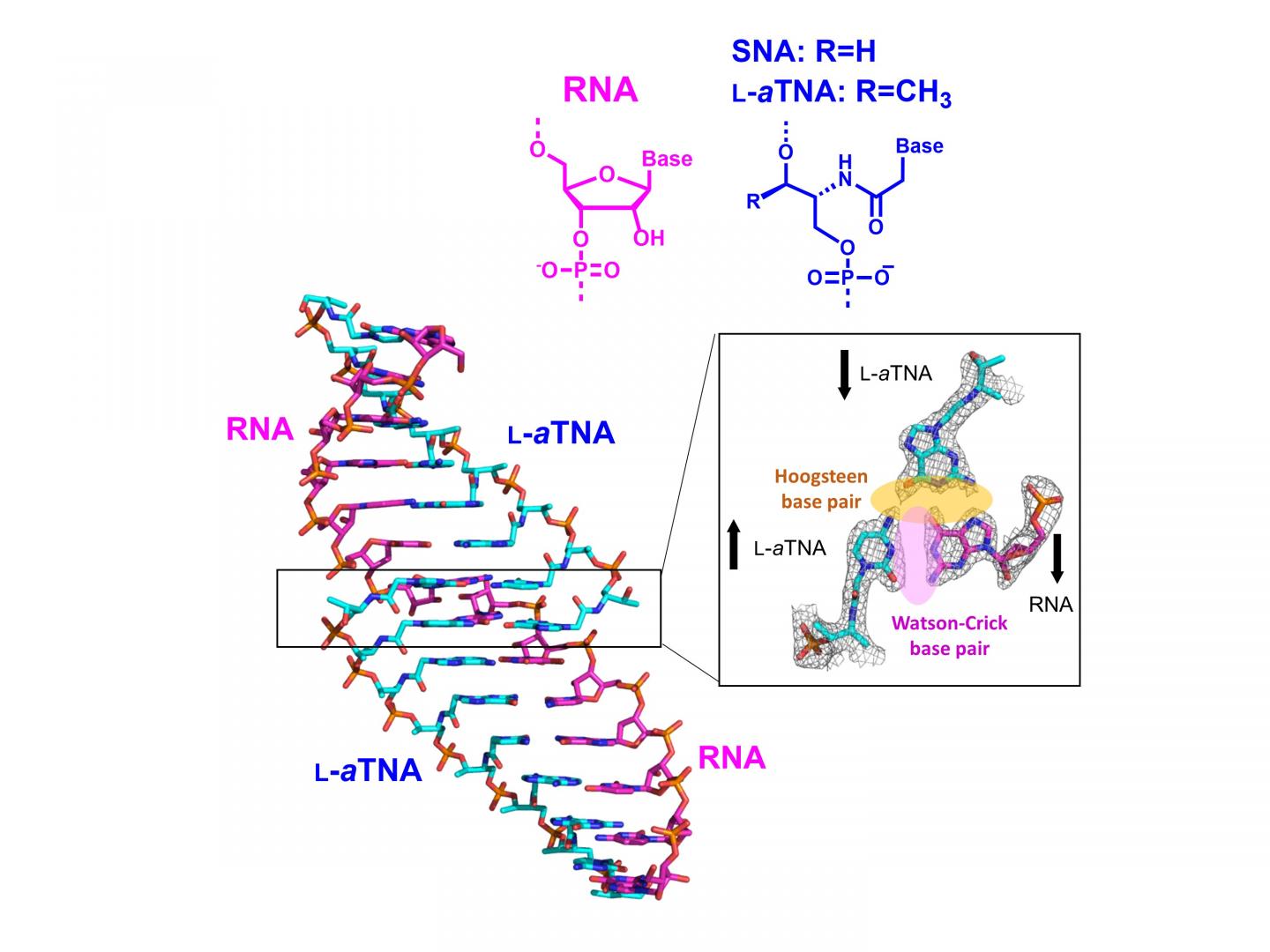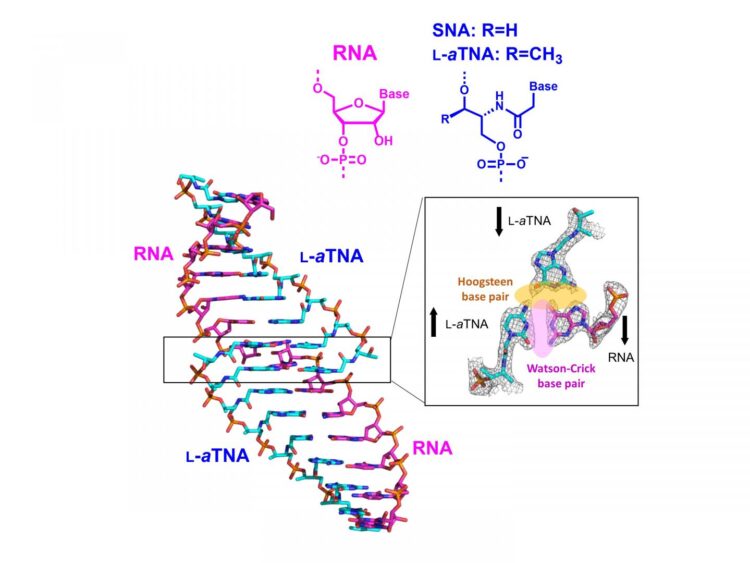
Credit: Yukiko Kamiya
As medical research progresses, traditional treatment protocols are being rapidly exhausted. New approaches to treat diseases that do not respond to conventional drugs are the need of the hour. In search for these approaches, science has turned to a wide range of potential answers, including artificial nucleic acids. Artificial or xeno nucleic acids are similar to naturally occurring nucleic acids (think DNA and RNA) — but are produced entirely in the laboratory.
Xeno nucleic acids are essential for the development of nucleic acid-based drugs. To be effective, they need to be able to stably bind to natural RNA (a cellular single-stranded version of the DNA, which is essential for all body processes). However, it is unclear how, if at all, RNA hybridizes with these xeno nucleic acids. A new study by researchers from Japan sheds light on this mechanism, opening doors to the development of potentially revolutionary nucleic acid-based drugs.
In their experimental study published in Communications Chemistry, the team of the researchers was able to determine three-dimensional structures of RNA hybridization with the artificial nucleic acids serinol nucleic acid (SNA) or L-threoninol nucleic acid (L-aTNA), two of the few xeno nucleic acids capable of binding and forming duplexes with natural RNA effectively. This study was the outcome of collaboration among researchers at the Graduate School of Engineering of Nagoya University, the Graduate School of Pharmaceutical Sciences of Nagoya City University, the Exploratory Research Center on Life and Living Systems (ExCELLS) of the National Institutes of Natural Sciences, and the Graduate School of Engineering of Osaka University.
Natural nucleic acids like DNA and RNA have a sugar-phosphate “backbone” and nitrogen-based components; while the nitrogen-based components in SNA and L-aTNA remain the same, they have an amino acid-based backbone instead. SNA and L-aTNA have advantages over other artificial nucleic acids because of their simple structure, easy synthesis, excellent water solubility, and high nuclease resistance. These characteristics make them more suitable for developing nucleic acid drugs. “Since SNA and L-aTNA can bind to natural nucleic acids, we wanted to know what the key to stabilize the duplex structure between SNA or L-aTNA and RNA,” states Dr. Yukiko Kamiya, the lead scientist on the study, “and therefore, we started to work on determining the three-dimensional structure.”
They found that intra-molecular (within-molecule) interactions are important for keeping the helical (twisted) double-stranded structures formed of acyclic nucleic acids and RNA stable. While helical structures of natural nucleic acids are A-type, meaning that they twist towards the right, these synthetic duplex structures seemed to align in a perpendicular pattern, resulting in larger areas between each turn of the helix. In addition, they obtained triple-stranded structures consisting of L-aTNA or SNA and RNA, through “Hoogsteen base pair” interactions, as shown in Figure 1.
These findings question a lot of things we have so far believed to be fundamental in biology. Ribose, the sugar in the backbone of natural nucleic acids, doesn’t seem to be necessary for forming a stable duplex, contrary to the currently accepted knowledge. Then why did nature select ribose? “This is perhaps better answered through future studies looking at the helical structure,” says Dr. Kamiya.
For now, her team is happy that their findings open up more drug development avenues. “The structural understanding of these duplexes can help us come up with novel designs of nucleic acid-based drugs. We hope that through these findings, the development of nucleic acid drugs will accelerate,” she says.
These insights, of course, go beyond medical applications. Nucleic acids are the blueprints of the “construction” of all living organisms, but we realize that many of their secrets are still uncovered. These findings shed light on a small but significant chapter of nucleic acids.
###
The article, “Intrastrand backbone-nucleobase interactions stabilize unwound right-handed helical structures of heteroduplexes of L-aTNA/RNA and SNA/RNA,” was published in the journal Communications Chemistry on November 6, 2020, at DOI: 10.1038/s42004-020-00400-2.
About Nagoya University, Japan
Nagoya University has a history of about 150 years, with its roots in a temporary medical school and hospital established in 1871, and was formally instituted as the last Imperial University of Japan in 1939. Although modest in size compared to the largest universities in Japan, Nagoya University has been pursuing excellence since its founding. Six of the 18 Japanese Nobel Prize-winners since 2000 did all or part of their Nobel Prize-winning work at Nagoya University: four in Physics – Toshihide Maskawa and Makoto Kobayashi in 2008, and Isamu Akasaki and Hiroshi Amano in 2014; and two in Chemistry – Ryoji Noyori in 2001 and Osamu Shimomura in 2008. In mathematics, Shigefumi Mori did his Fields Medal-winning work at the University. A number of other important discoveries have also been made at the University, including the Okazaki DNA Fragments by Reiji and Tsuneko Okazaki in the 1960s; and depletion forces by Sho Asakura and Fumio Oosawa in 1954.
Website: http://en.
Media Contact
Yukiko Kamiya
[email protected]
Original Source
http://en.
Related Journal Article
http://dx.





